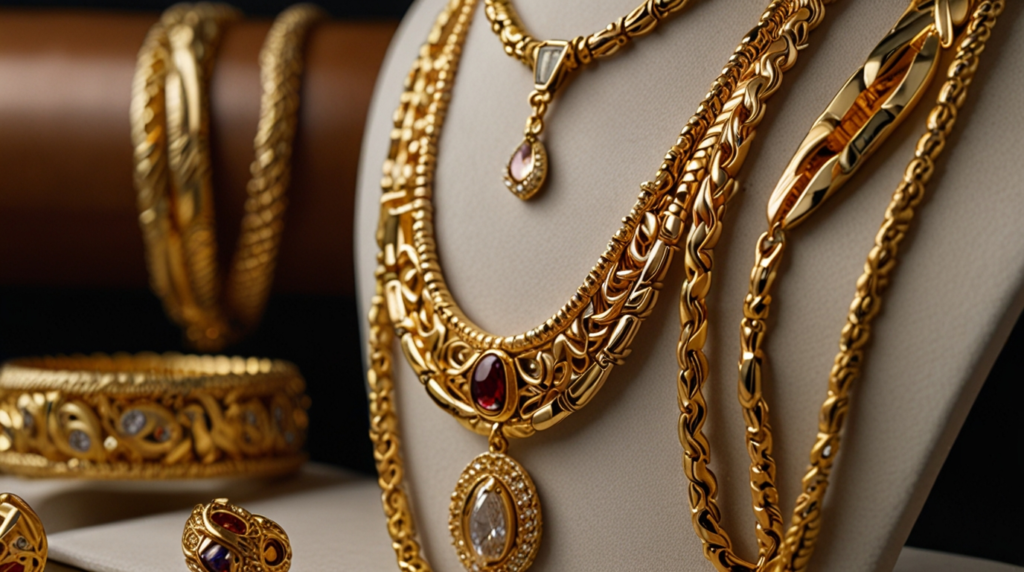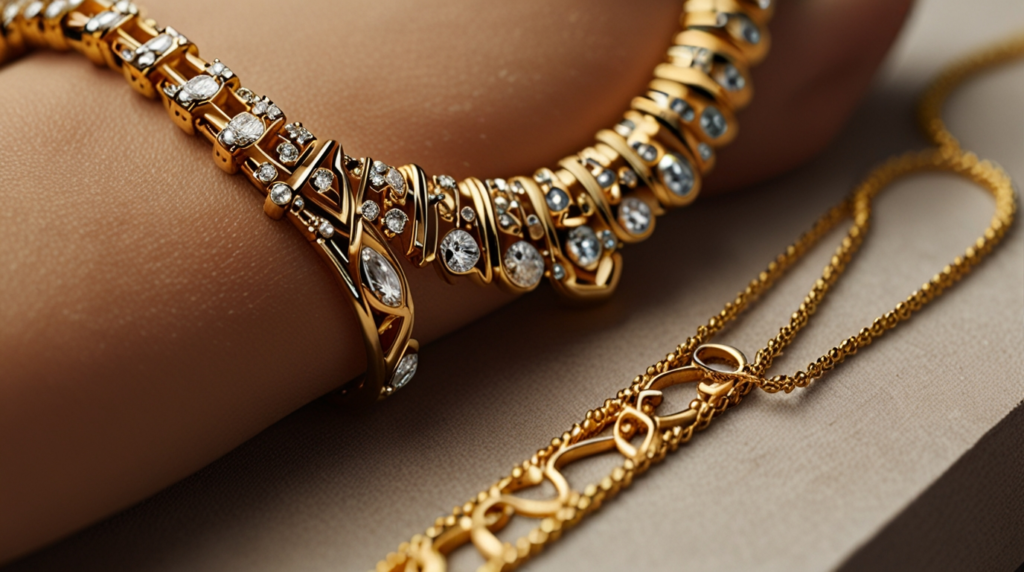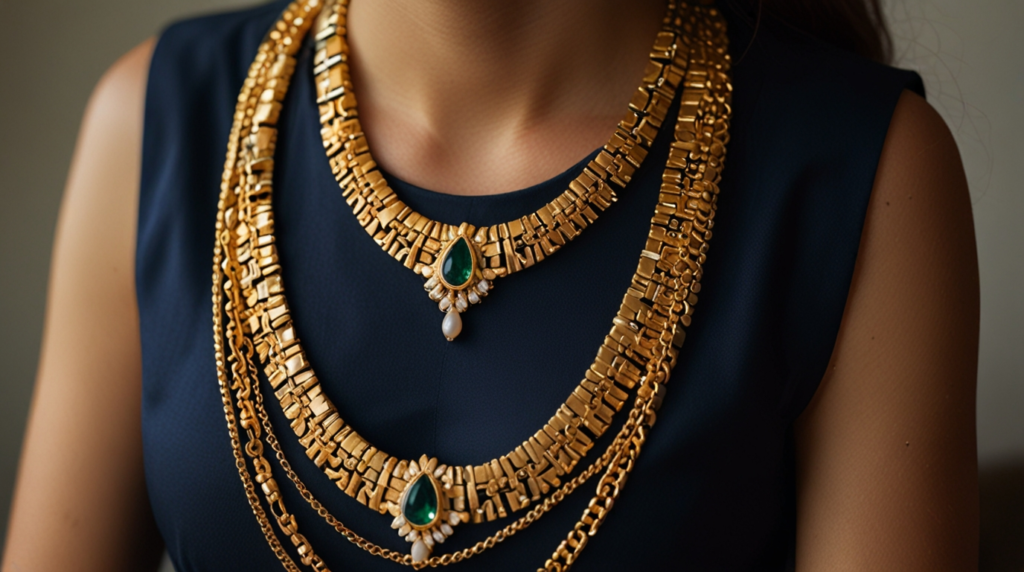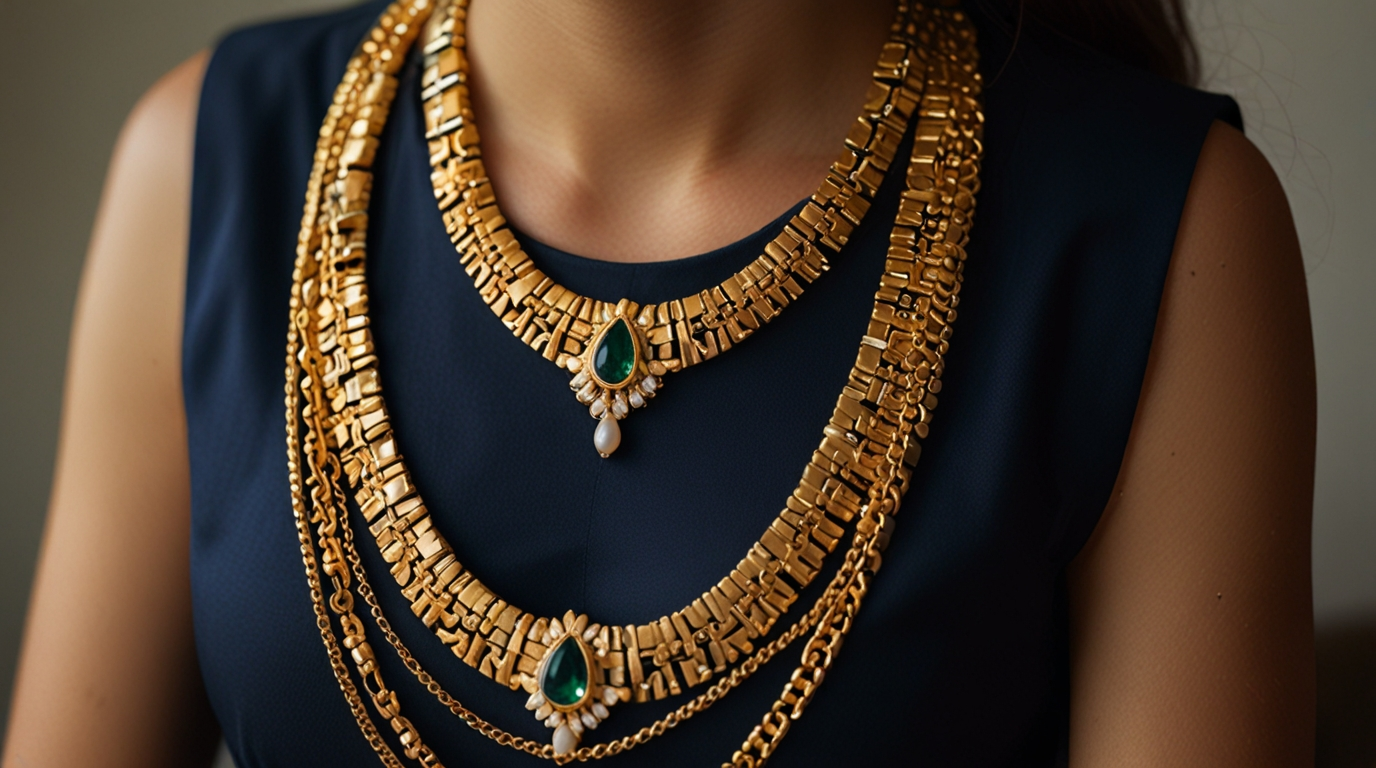Introduction
Gold jewelry has held an area of prominence in human subculture for thousands of years, symbolizing wealth, electricity, and artistic expression. From historical civilizations to fashionable societies, gold’s intrinsic splendor and malleability have made it the cloth of choice for crafting tremendous portions of jewelry. This article explores the appeal of gold rings, its historical importance, the craftsmanship worried in its advent, and its region in modern style and subculture.
1.Historical Significance of Gold Jewelry
Gold jewelry’s history is as wealthy and varied as the civilizations that have cherished it. Its earliest uses date lower back to historical Egypt, in which it was not simply an image of wealth but also believed to have magical properties. The Egyptians mastered the artwork of goldsmithing, creating elaborate portions for pharaohs and nobility, often inlaid with treasured stones like lapis lazuli and turquoise.
In ancient Greece and Rome, gold jewelry persisted as a symbol of wealth and standing. Greek artisans added new strategies, including filigree and granulation, developing sensitive and complex designs. Roman jewelry frequently featured motifs stimulated by mythology and nature, reflecting the cultural and religious beliefs of the time.

Gold’s importance extended to Asia, where Indian and Chinese cultures developed their very own unique styles. In India, gold rings have been necessary to cultural and non secular practices, with elaborate designs frequently passed down through generations as a circle of relatives’ heirlooms. In China, gold jewelry changed associated with auspiciousness and was used in ceremonies and as presents to carry precise fortune.
2.The Art of Goldsmithing
Goldsmithing is an ancient craft that has developed over millennia. It requires an aggregate of inventive talent, technical skills, and innovative strategies. The procedure of making gold jewelry involves numerous tiers, each demanding precision and information.
Design
The creation of gold rings starts offevolved with the layout phase. Designers sketch their thoughts, thinking about factors along with aesthetics, functionality, and the meant wearer. Modern designers often use computer-aided design (CAD) software to create distinct models, making an allowance for particular adjustments earlier than the manufacturing technique begins.
Alloying
Pure gold is just too smooth for most jewelry programs, so it is alloyed with other metals to increase its power and sturdiness. Common alloys include gold mixed with silver, copper, nickel, and zinc. Gold’s purity is measured in karats, with pure gold being 24-karat gold and a lower karat number indicating a better proportion of different metals.
Casting
One of the top strategies for shaping gold earrings is casting. The lost-wax casting approach, used for centuries, entails creating a wax model of the piece, which is then encased in a mold. The mildew is heated to melt and remove the wax, leaving a hollow space into which molten gold is poured. Once the gold solidifies, the mold is broken away, revealing the hard casting of the jewelry.
Fabrication
Fabrication includes shaping gold into jewelry by means of slicing, bending, and assembling numerous additives. Techniques such as forging, soldering, and engraving are used to obtain the desired bureaucracy and info. Forging includes hammering gold into form, and at the same time, soldering makes use of heat to sign up for portions collectively. Engraving adds complex patterns and designs to the floor of the gold.
Stone Setting
Many gold earrings feature gemstones, which require careful placement to stabilize them in place. Numerous stone-setting techniques exist, including prong placement, bezel placement, and pavé setting. Each approach involves creating a secure and aesthetically captivating association that highlights the splendor of the gemstones.
Finishing
The final step in the introduction of gold earrings is finishing, which enhances the piece’s look and wearability. This includes polishing to obtain a clean, vibrant surface and using textures or extra elaborations. Finishing strategies, such as matte, brushed, or hammered finishes, can add specific visible outcomes to the jewelry.
3.Gold Jewelry in Contemporary Fashion
Gold jewelry continues to be an image of luxury and status in contemporary style. Its undying appeal and versatility make it a staple for both regular wear and special occasions. Modern designers draw inspiration from historic patterns while incorporating present-day traits, resulting in a variety of gold earrings.

Everyday Elegance
Gold earrings have become an integral part of normal fashion, imparting diffused elegance and class. Simple gold necklaces, bracelets, and jewelry are famous for their potential to complement a wide range of clothing. Minimalist designs, along with sensitive chains and understated rings, offer a touch of luxury without overwhelming the wearer’s appearance.
Statement Pieces
For the ones trying to make a bold announcement, gold jewelry offers infinite opportunities. Chunky gold necklaces, oversized hoop jewelry, and intricately designed cuffs can rework an outfit from regular to super. Statement portions regularly function in difficult designs, large gems, or unique textures, showcasing the wearer’s personal style and confidence.
Cultural and Religious Significance
Gold earrings maintain cultural and non-religious significance in many parts of the world. Traditional designs, including temple jewelry and bridal sets
In the Middle East, gold earrings are frequently worn as an image of wealth and standing. Intricate designs incorporating Arabic calligraphy and geometric patterns replicate the place’s creative background. Gold jewelry is likewise typically given as presents during essential lifestyle activities, including weddings and births.
Investment and Collectibility
Gold jewelry isn’t always just a style accent but also a financial investment. The intrinsic cost of gold ensures that rings keep their worth over time. Collectors and traders regularly seek out pieces from famous designers or those with ancient significance, viewing them as both creative treasures and economic belongings.
Vintage and antique gold earrings are mainly popular because of their craftsmanship and historical value. Pieces from iconic earring homes, such as Cartier, Tiffany & Co., and Van Cleef&Arpels, frequently command excessive prices at auctions, reflecting their enduring appeal and investment capacity.
4.Ethical Considerations in Gold Jewelry
Responsible Sourcing
Responsible gold sourcing involves ensuring that the metal is acquired in a manner that respects human rights, hard work standards, and environmental sustainability.

FAQs
- “A Symbol of Luxury and Craftsmanship”
Gold jewelry has been cherished on the grounds of historical times, symbolizing wealth, power, and creative expression. In ancient Egypt, it was believed to have magical homes and was used to enhance pharaohs and nobility. In Greece and Rome, gold earrings indicated fame and featured complicated designs inspired by mythology and nature. In Asia, particularly India and China, gold earrings perform a critical position in cultural and religious traditions.
2. What are the primary degrees worried about growing gold rings?
Answer: The primary tiers of creating gold rings include layout, alloying, casting, fabrication, stone setting, and completing. The manner starts by designing the piece, which is observed through alloying 24-karat gold with different metals for electricity. The earrings are then forged, shaped via fabrication, set with gems if relevant, and finished with polishing or texturing to beautify their look.
3. How is gold alloyed, and why is this system vital?
Answer: Gold is alloyed by mixing it with different metals, including silver, copper, nickel, and zinc, to increase its strength and sturdiness. This system is vital because 24-karat gold (24 karats) is too soft for most ring packages. Alloying permits the creation of more long-lasting and wearable rings.
4. What are the exceptional strategies utilized in stone putting for gold rings?
Answer: Various techniques used in stone setting include prong setting, bezel setting, and pavé setting. Prong setting involves securing the gemstone with metallic prongs. The bezel setting encircles the gemstone with a steel rim, supplying a steady hold. Pavé placing uses small steel beads to keep more than one stone in place, growing a continuous sparkle.
5. Why are gold rings considered an investment?
Answer: Gold earrings are considered funding due to gold’s intrinsic value, which tends to maintain or boom over time. Gold jewelry, specifically pieces from famous designers or with historical significance, can be recognized in price. Additionally, gold’s durability and timeless appeal make it an enduring asset.
6. What are the ethical issues in gold jewelry manufacturing?
Answer: Ethical concerns in gold jewelry manufacturing include accountable sourcing, avoiding struggle minerals, and decreasing environmental impact. Responsible sourcing ensures fair exertion practices and environmental sustainability. In the conflict-free gold approach, the gold is not sourced from areas financing armed struggle. Using recycled gold and minimizing the usage of dangerous chemical compounds are also vital moral practices.
7. How does recycled gold make contributions to sustainability inside the earrings industry?
Answer: Recycled gold contributes to sustainability by reducing the need for new mining, conserving herbal resources, and minimizing environmental impact. It involves reclaiming gold from vintage rings and other sources, which facilitates a decrease in the ecological footprint of gold jewelry manufacturing and helps a round financial system.
8. What role does technology play in contemporary gold jewelry design and manufacturing?
Answer: Technology plays an enormous role in present-day gold ring layout and production. Computer-aided design (CAD) allows for particular modeling and modifications before manufacturing. 3D printing permits the creation of problematic designs that conventional methods cannot achieve. Technological advancements, such as nanotechnology, also beautify residences by improving durability and scratch resistance.
9. How do cultural influences form contemporary gold earring design?
Answer: Cultural influences shape cutting-edge gold ring design by inspiring designers to blend conventional motifs with contemporary aesthetics. Globalization and cultural trade result in precise, modern pieces that resonate with various target audiences. This fusion of styles keeps gold jewelry applicable and appealing throughout one-of-a-kind cultures and generations.
10. Why is personalized and customized gold jewelry turning more famous?Answer: Personalized and custom-designed gold rings are becoming more famous because consumers are seeking specific portions that reflect their individuality. Advances in the era, including CAD and 3-D printing, make it less difficult to create bespoke earrings tailor-made to precise preferences. Personalized engravings, custom designs, and made-to-order pieces provide exclusivity and emotional connection, enhancing the appeal of gold rings.



